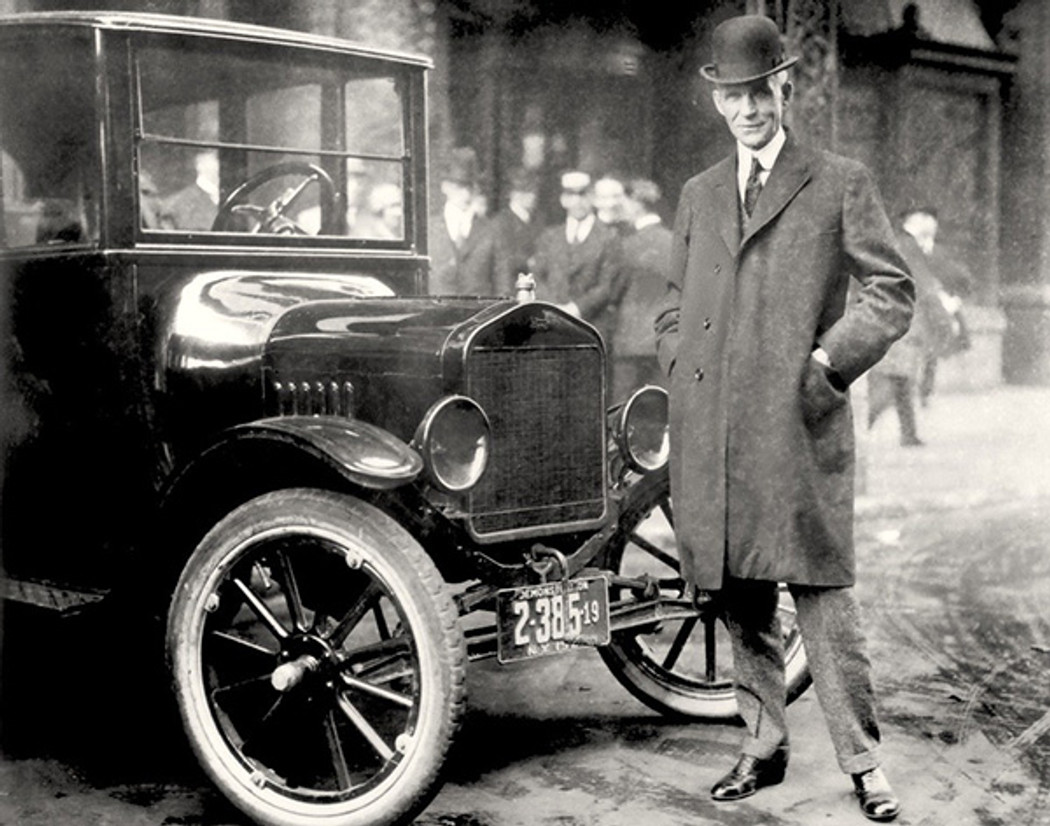Henry Ford: Automotive Visionary
Henry Ford was one of the pioneers of the automotive industry. Even today, 120 years after it was founded, Ford Motor Company remains one of the worlds largest car manufacturers. While Henry Ford would go on to leave a controversial legacy, there is no doubting the impact he had on the modern world.
Considered one of the fathers of the automobile industry, Henry Ford's legacy is something most people are at least somewhat familiar with. That said, there's still a lot about this titan of industry many are unfamiliar with.
From his early days all the way up to his death, Ford accomplished much in the world of technology and business. Let's look over some of these achievements as we explore the life of Henry Ford: automotive visionary.
Early Life
Henry Ford was born on July 30, 1863 in Dearborn, Michigan. His parents, William and Mary, were a farming couple, Henry being the oldest of his siblings Margaret, Jane Ford, William Jr. and Robert. As was customary, each member of the Ford family spent much of their life pitching in around the homestead
Little of note happened for a large portion of time after his birth, Ford himself recounting that he wasn't very fond of farm work and had no desire to take over as his father intended.1 While that may have been the boy's fate at one point, things changed when he turned 12 and received a pocket watch for his birthday. Tinkering with the contraption, Ford eventually learned how to take apart and reassemble the device, doing the same for others and becoming a local watch repairman. This, alongside seeing a road engine at work, sparked the imagination and would lead Ford down the path to innovation he'd later follow.
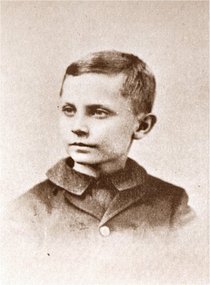 Childhood photo of Henry Ford
Childhood photo of Henry Ford
In 1876, Ford's mother died, an event that caused a profound sadness in the young man. Three years later, he finally left the family farm to pursue a career as a machinist in Detroit. Working as the apprentice of James F. Flower & Bros. and eventually the Detroit Dry Dock Co., he learned a great deal about how to operate and service various machines. He also studied bookkeeping at Goldsmith, Bryant & Stratton Business College while there.
Ford would return to the family farm in 1882 that to use his new talents to help work the machinery the family employed, particularly the Westinghouse farm engine. He even managed to land a part-time job with the Westinghouse Engine Company itself, using his spare time to experiment with machines. This eventually led to him eventually constructing his own tractor and car powered by steam, though he would admit that these were impractical given the large size they needed to be to fit the dangerous boiler.
Marriage and Inspiration
Ford continued to work on his family's farm for the next few years, continuing to dabble in mechanical engineering as he did. During 1885, Ford would work with an Otto engine for the first time, an event that would both teach him valuable skills related to non-steam engines and inspire him to build his first two-cylinder engine by 1890, completing a working car by 1892. Notably, Ford was one of the few men of his time who did not do much personally with electricity at this point, considering it too expensive and impractical.
In 1888, Ford would marry his wife, Clara Jane Bryant. He would also be managing a sawmill in addition to his work on the farm, the two living in relative comfort for a time. Despite his dislike of electrical testing in his personal experiments, Ford found himself employed by the Edison Illuminating Company of Detroit by 1891, moving back to the city with his wife. He was promoted to be the company's Chief Engineer in 1893 in the same year his son, Edsel, was born, this advancement giving him more free time to work on developing gasoline-powered engine technology.
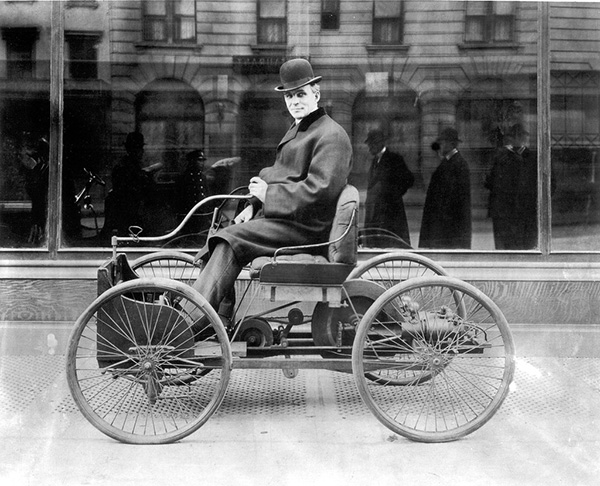 The Ford Quadricycle, and early automotive prototype
The Ford Quadricycle, and early automotive prototype
These experiments would eventually lead to the creation of the Ford Quadricycle in 1896,2 a four-wheeled, self-propelled car using a combustion engine. Though named after the bicycle tires that it used, this invention looked towards a future of vehicle travel that revolved around the automobile. Even after many successful tests, Ford continued to think of new ways to build upon this idea, inspiring even further ambition within the field.
Breaking with the tradition of other inventors of the time, Ford quickly found a buyer for his Quadricycle, using the money he made to build new and better versions using what he'd learned from his tests with approval from Thomas Edison himself to continue researching while he worked at the company.
Ford's second model of vehicle was completed in 1898. This led to him securing the trust and financial backing of lumber baron William H. Murphy, the two going into business together in 1899 by creating the Detroit Automobile Company.3 Ford resigned from his position at Edison Illumination at this time, focusing full time on his work with automobiles.
Setbacks
Despite a promising start, the Detroit Automobile Company did not see success. Ford's new cars were less efficient and too costly to produce, being a failure in both his eyes and those of consumers and his partners. Additionally, while those working alongside Ford wished to make passenger vehicles more of a focus, Ford himself stuck firmly to single-seat cars. As a result, the company went under by the start of 1901 with only 20 cars to their name and a roughly $86,000 lost.3
 Henry Ford with Thomas Edison
Henry Ford with Thomas Edison
Though these setbacks were demoralizing, Ford didn't give up on his dream of being an inventor. Undeterred by these setbacks, Ford bounced back quickly with the help of fellow engineer C. Harold Wills. Together, the two successfully created a racing vehicle with 26 horsepower, demonstrating the viability of this new type of car to the masses. It was also quite impressive to the former members of the Detroit Automobile Company, Ford returning to business with his old associates and forming the Henry Ford Company in November of the same year.4
This newfound success was short-lived, however. Barely a year later, Ford left the company due to the hiring of Henry M. Leland as a consultant. Leland was an inventor and engineer in his own right known for being the man to create the engines for the Oldsmobile model of car. Initially, his job was to appraise the value of various assets the struggling company was planning to liquidate, a suggestion from Leland convincing the various business partners to reorganize and bring him on as part of it.
Ford did not agree with this and, with the move away from racing vehicles (Ford's passion at the time), his previously mentioned decision to leave was finalized.4 The company quickly reorganized under the name of Cadillac Automobile Company, Ford being replaced by a new chief engineer.
Newfound Success
Ford didn't lose any sleep over his departure, having already lined up a new business opportunity with someone more in line with his personal sensibilities. With funding from champion cyclist Tom Cooper and old friend Alexander Y. Malcomson, Ford created the "999" car, a racing vehicle with over 80 horsepower.
Driven by Barney Oldfield during October of 1902, the success of their venture inspired ford and Malcomson to go into business together. Ford & Malcomson, Ltd. was created, the two teaming up to create cars for both personal and racing use. The two made an arrangement for parts supplied by John and Horace E. Dodge, giving the duo over $160,000 worth of materials to be repaid at a later date.
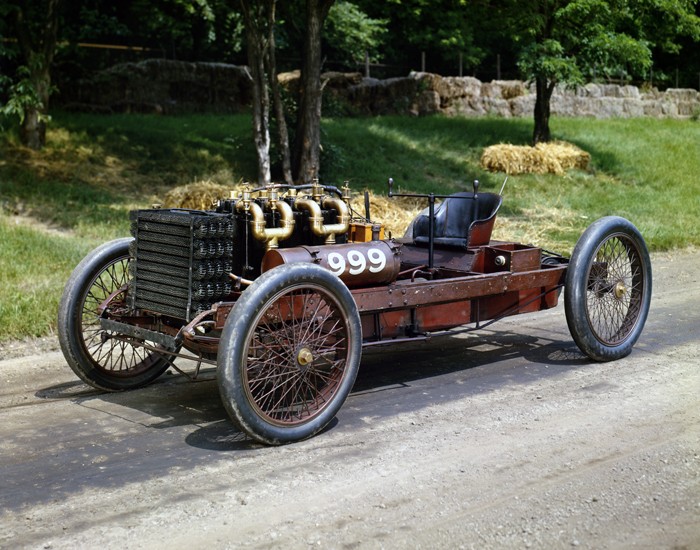 Ford's 999 Racing Car
Ford's 999 Racing Car
This almost immediately became a problem due to the fact that Ford and Malcomson's cars simply weren't selling. The Dodge brothers became impatient, demanding to be repaid with money the two simply didn't have. Thinking quickly, Malcomson managed to convince the brothers to go in on the company with them, making them partners by leveraging a group of new investors to show their commitment. In reality, these investors were simply people Malcomson and Ford knew, including the former's secretary and lawyers.
Regardless, the plan worked, the company reincorporating as the Ford Motor Company in 1903 with total funding of only $28,000. Despite these dire beginnings, the company actually became a success. This came largely from a well-received demonstration of their new vehicles' potential in January of 1904, Ford himself driving a full mile across the frozen Lake St. Clair and setting a new land speed record by making it to 91.37 miles per hour.5
ALAM Fight
With his company finally getting off the the ground, Ford sought approval for a Selden license from the Association of Licensed Automobile Manufacturers. The ALAM controlled the market on vehicle manufacturers, using their ownership of a patent for George B. Selden's original automobile. This as well as their close relationship with various other companies gave them a near-total control of the vehicle market, approving almost exclusively their own members for the right to sell cars and suing anyone else for supposed infringement.
Ford applied for the license and was refused, officially for his past business failures but more likely for not being a members of the organization itself. Essentially ignoring the fact he wasn't supposed to continue business after that, Ford and his partners simply carried on with business, the ALAM making good on their threats and eventually taking the group to court.
The legal battle was long and arduous, lasting from the end of 1903 to the end of 1909. The ALAM argued their exclusive right to sell automobiles using an internal combustion engine, even going so far as to threaten further lawsuits against anyone who so much as bought a Ford car. Ford argued back, as many others had before him, that the patent itself was flimsy at best and far too broad to apply to him or most other vehicles.
At the lawsuit's conclusion, the judge ruled in favor of the ALAM. Ford appealed immediately, the case continuing until January of 1911 with Ford's victory. The ALAM chose not to try and overturn the ruling, Ford securing himself a decisive win against the monopoly and making himself something of a hero to other business owners and the common people thanks to the competition this introduced into the automobile market.
 Patent drawing for Ford's Model T car
Patent drawing for Ford's Model T car
Birth of the Model T
While fighting against the ALAM, Ford and his partners continued business as usual. Despite having so much of their time and money tied up in the legal battle, the company was still hard at work drafting new inventions. In 1908, their work finally saw fruition, the legendary Model T announced to the world.
The Model T was unique in many ways compared to its predecessors. From its left-hand steering wheel to its enclosed engine block and transmission to its relatively cheap cost and much more all made it an immediate success, so much so that it may still be the most successful single car ever made in terms of sales.
Ford almost single handedly transformed the landscape of American drivers with the Model T. Not only were they easier to drive and maintain compared to other vehicles, their cheap price allowed them to become an every day appliance compared to a luxury only the rich could afford. A majority of Americans within the next few decades would only learn to drive at all because of the car,7 ensuring its longevity far past the point of most competitors.
By marketing the car to farmers, Ford found almost unbelievable amounts of success. Not only did it better connect people living in rural areas, it also created a faster means of transport compared to the horse. More crops could be grown without the need for so much hay and that surplus in produce could be more easily transported to market, further cementing Ford's reputation as a man of the people and a legend-like figure.
Optimization and the Worker
The miraculous success of the Model T let Ford expand his operations significantly. One of the first things he did to both increase productivity and cut costs was implement a moving conveyor belt in his factories starting in 1913, especially the new ones he began constructing to meet demand. This allowing for faster assembly by workers. As a result, even more cars were being built and prices dropped further, leading to even more sales.
Another industry-shaping decision Ford made during the next few years was his decision to increase the minimum wage of his workers to $5 per hour, more than double the industry standard. This surpassed the rest of the industry and increased the quality of life for his workers as well as their productivity. He also shortened the work week to five eight hour days, an idea completely unheard of at that time. Though his intents were obviously motivated by profit (more money and leisure time meant more customers to buy his products), those close to Ford do contest that he genuinely wished to improve the quality of life for those he employed.
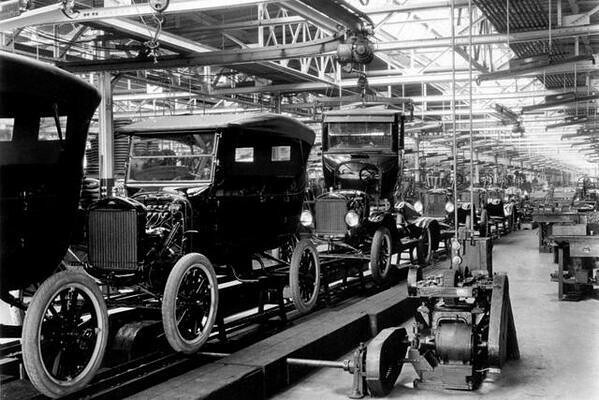 Ford cars rolling off the assembly line
Ford cars rolling off the assembly line
These changes brought even more fame to Ford, many others scrambling to meet his benefits for fear their employees might jump ship. Many praised him for how much this helped people while others (mostly in business) declared that his "socialist" policies were a danger to the very fabric of society.
Things weren't all good for Ford's workers, however. On the subject of unions, Ford was staunchly opposed and claimed they would reduce productivity. He employed many union-busting tactics and generally set the stage for the decline of organized workers across the country. One of his most successful means of doing this was by employing Harry Bennett, a former Navy boxer who would intimidate and even assault various union leaders to discourage.
This all came to a head in what was eventually called 1937's Battle of the Overpass in which Bennett and his men viciously beat members of the United Automobile Workers union with clubs while police watched, doing nothing to stop the violence.8 Up to his death, Ford refused to negotiate with the unions, his company being the last to accept the UAW in the Detroit area.
Playing Politics
Ford's success in business meant making friends in high places, one of which being President Woodrow Wilson. He personally asked Ford to run as a Democrat to gain a Michigan Senate seat in the 1918 election.
Ford ran on a platform of support for the proposed League of Nations and in opposition to the ongoing Great War (World War I), though his company did manufacture aviation equipment for the United States. Close as the race was, Ford would end up losing to Republican Truman Newberry.
Company Control
To make matters worse, a legal dispute with the Dodge brothers over the last few years finally came to a close. While the Dodges still owned stock in Ford's company, the duo had moved on to manufacturing their own vehicles by that point. Even so, they saw Ford as a valuable means of making money and grew irritated with his eccentric behavior.
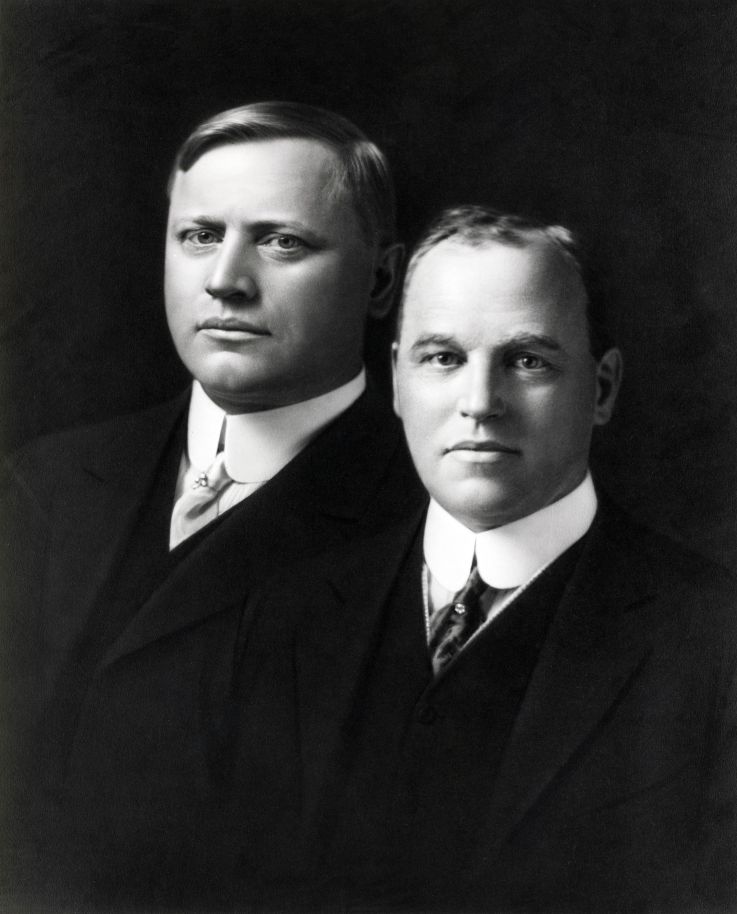 The Dodge Brothers
The Dodge Brothers
The judge ruled in favor of the Dodges in 1917, stating that Ford's "reckless expansion" and the proliferation of the Model T meant he had betrayed the duty of a company in making money for its stockholders.
At the end of 1918, Ford, seemingly defeated in both the political and legal realms, gave up control of his company to his son. Despite this, he still interfered in the company's affairs, going so far as to veto certain decisions his son made that displeased him. Not only that, he began talk of creating a new company not long after known as Henry Ford and Son, a direct threat against the Dodges for refusing him the ability to leave fully. This scared them quite a bit as he had the means and support to take many of his best employees with him in this new venture.
In actuality, this was entirely a ruse set up by him and his son to take full control of their original company.1 Their goal was to scare the other shareholders in the company enough to get them to sell their stake in the company to Ford, the erratic decisions by Ford and his decision to seemingly go into competition against his own son working as a recipe for disaster in terms of share value.
The plan worked perfectly, Ford soon gaining full control of Ford Motor Company. With all roadblocks out of his way, he set to work on opening yet another new factory, one that the Dodges had originally sued to prevent happening all those years ago. Having learned how badly the scarcity caused by World War I could affect business, this all played into Ford's master plan of total self-sufficiency to control all levels of production from materials to manufacturing to distribution.
Vertical Integration
To secure his stranglehold on the market, Ford began yet more aggressive expansion. Not only did he build more factories to make his cars, he also bought up a railroad and over a dozen coal mines. He also purchased 700,000 acres of land to build a sawmill on as well as freighters and a glassworks, all of them coordinating to supply the raw materials and transportation necessary to ensure none of his factories or distribution systems would run out.
Moving to the newly constructed plant in River Rouge, Ford's new strategy was another resounding success. Everything had been calculated perfectly to supply just the right amount of materials at the precise timing needed to optimize operations down to the second. Entirely paid for by Model T profits, Ford was no longer beholden to anyone but himself and the laws of reality.
The Dearborn Independent
Ford expanded operations further beyond the scope of automobiles during this time. Though his company had created various aircrafts and farming supplies in its British factories during World War I, this fledgling step into newspapers would be a major step for him outside of his usual wheelhouse.
Purchased in 1918 by Ford's friend and secretary, Ernest G. Liebold, the weekly newspaper The Dearborn Independent began circulation. First printing in 1920, there were two things of note about the publication: Firstly that it was required to be stocked in all Ford businesses in the United States, and secondly in how brazenly antisemitic it was.
Up until its final issue in 1927, a regular feature of The Independent was Ford's own conspiracy rantings. Of particular note was his preoccupation with baseball, saying in one May 1920 issue: "If fans wish to know the trouble with American baseball they have it in three words — too much Jew."
Over the next several years, Ford earned himself a reputation as one of the Jewish people's greatest enemies, drawing praise from the likes of Heinrich Himmler and Adolf Hitler following the publication of his antisemitic writings in Germany as collected volumes.9 The paper also helped to popularize passages from the fraudulent conspiracy text, The Protocols of the Elders of Zion,10 both it and Ford's papers used by the Nazis as propaganda during the 1930's.
These attitudes are made all the more alarming given Ford's at-the-time radical decisions to employ women, Black men, and disabled people in his factories. While certain sources dispute whether or not Ford actually stood behind much of what was written in The Independent and merely allowed his name to be printed on the rants, he was still cited by many Nazis including Hitler as an inspiration, even receiving the Grand Cross of the German Eagle by the Party in 1938.11
Decline
Despite Ford beginning the 1920's as possibly the most powerful businessman in the world, his fall would begin not long after. His stubbornness caused him to refuse to advance with the times, the Model T quickly beginning to fall behind in sales after competitors introduced more advanced function and comfort features into their vehicles.
Additionally, Ford's rampant antisemitism and aforementioned violent anti-union attitudes began to tarnish his reputation among workers and the general public. In a bid to attract new customers, Ford began apologizing for some of his more incendiary words and actions as well as introducing the new Model A vehicle to the public in 1927. While his apologies were well-received at the time, his worst behavior was still ahead of him (Battle of the Overpass, accepting the Grand Cross in Germany), the Model A also failing to be as big a success as its predecessor.
Things took a turn for the worse when he slashed wages for his employees in 1932, cutting the minimum salary from $7 to $4, Ford's company now paying less than industry standard in a reversal to his past self. This was driven largely by the Great Depression, though the reasoning mattered little to the furious workers who were now struggling to make ends meet.
1932 was also the year in which the Ford V8 was introduced. The result of secret projects working with implementing a V8 engine into Ford's vehicles at a lower price than competitors. This, as well as his expansion into other continents and the establishment of the Universal Credit Corporation to help consumers finance car purchases, kept the company profitable despite declining sales.
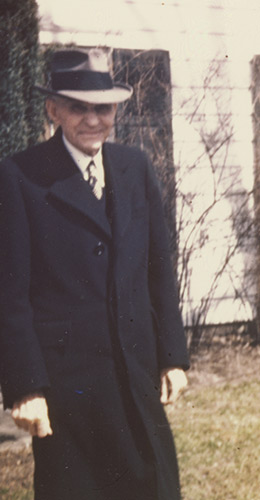 The last known photograph of Henry Ford, taken in 1947
The last known photograph of Henry Ford, taken in 1947
The End of Ford
As time went by, Ford's health and mental state began to decline. He was noted to be even more obsessed with his various mechanical interests during those times than ever before as well as increasingly suspicious of other people. While his earlier pacifism remained, it seemed to combine with his sympathies towards Germany, even going so far as to claim that various maritime attacks like the 1939 submarine attacks on United States' vessels was part of a ploy by war profiteers to draw his country into the conflict.13 He also began using French POWs as slave laborers in his German factories during the war,8 further decreasing public trust in his organization.
In 1941, Ford nearly closed down his entire business after the UAW successfully forced him into the position to agree to union demands for better pay and working conditions. Though he was eventually convinced not to do this and signed an agreement with the organization, the reality remained that the once-great leader was in no shape to continue leading.
While Ford did not possess a formal title within the company for much of this period, he still held almost full control over decision making by proxy through his son's actual presidency. This changed with his son's death in 1943, Ford briefly resuming the position as president despite having suffered several heart attacks and strokes himself during the last few years.
Despite their objections, the board of directors still elected Ford to the position. He would stay the president of Ford Motor Company until September of 1945 and the end of World War II, at which point Henry Ford II (his grandson) took over. This was a great relief to anyone with financial investment in the company as Ford's resistance to change and general unreliability caused it to lose a reported $10 million per month.
Little of note happened for Ford during the last two years of his life. His health continued to decline as the world finally began to leave him behind. He would eventually die on April 7, 1947 of brain hemorrhage at the age of 83, supposedly brought on as a result of seeing what his antisemitic views had inspired when an associate of his showed him newsreels of the Nazi concentration camps during the war.12 He would be buried in Detroit soon after in the Ford Cemetery.
While Henry Ford left behind a controversial legacy, there is no doubting the impact he had on the modern world. Even today, 120 years after it was founded, Ford Motor Company remains one of the worlds largest car manufacturers and the name "Ford" is seen every day by people all over the world.
References
- https://books.google.com/books/about/My_Life_and_Work.html?id=4K82efXzn10C
- https://web.archive.org/web/20100615125140/http://hfmgv.org/exhibits/showroom/1896/quad.html
- https://en.wikipedia.org/wiki/Detroit_Automobile_Company
- https://web.archive.org/web/20120829193220/http://hfha.org/HenryFord.htm
- https://www.history.com/this-day-in-history/henry-ford-sets-speed-record
- https://en.wikipedia.org/wiki/Association_of_Licensed_Automobile_Manufacturers#Control_of_the_industry
- Richard Bak, Henry and Edsel: The Creation of the Ford Empire (2003)
- https://archive.org/details/americanaxis00maxw
- https://en.wikipedia.org/wiki/The_International_Jew
- https://en.wikipedia.org/wiki/The_Protocols_of_the_Elders_of_Zion
- https://rarehistoricalphotos.com/henry-ford-grand-cross-1938/
- https://www.goodreads.com/book/show/1122073.Ford
- https://www.penguinrandomhouse.com/books/187498/the-peoples-tycoon-by-steven-watts/
Recent Posts
-
Henry Ford: Automotive Visionary
Henry Ford was one of the pioneers of the automotive industry. Even today, 120 years after it was f
-
The Rise of the Elevator
For many people, elevators are one of those parts of everyday life that you just don't think about.


